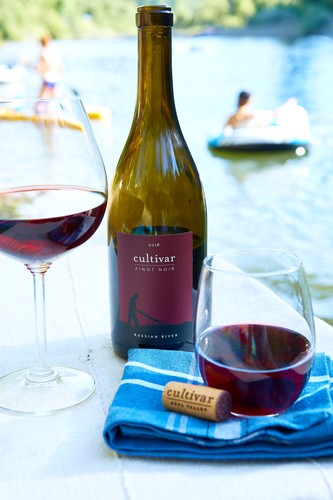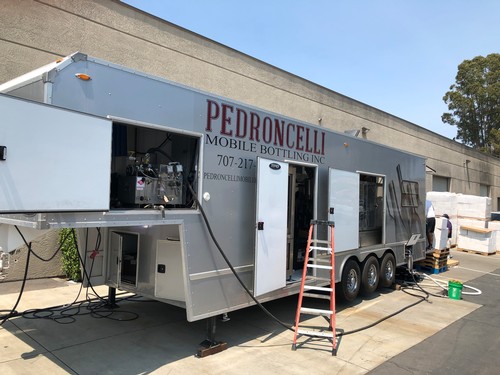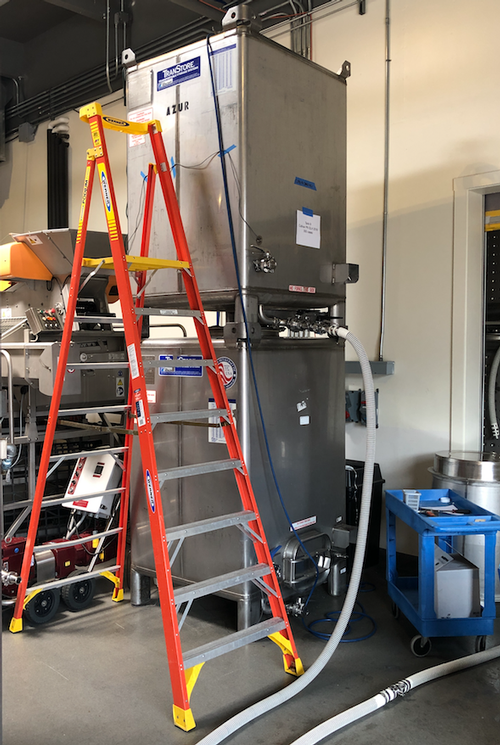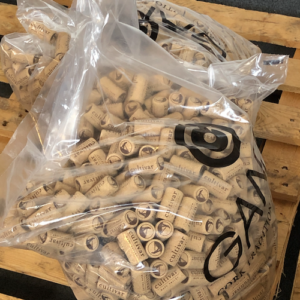Bottling Pinot Noir at Cultivar Wine

For pinot noir, bottling is the last step in a nearly two-year process that takes grapes from the vine and puts wine on your table. If you’ve ever seen a wine bottling, you may think it looks like a lot like manufacturing, and not nearly as romantic as winemaking sounds. The truth is, every step of the process is absolutely essential to ensure that you not only pour a quality wine from that bottle, but that the wine can beautifully and gracefully age in the that bottle.
Let’s take a look at how bottling works. Earlier this month, we bottled our two, newest pinot noirs: the 2019 Russian River Pinot Noir and the 2019 Santa Lucia Highlands Pinot Noir. We’re especially excited about the Santa Lucia Highlands release, as it is our first bottling of pinot noir from this unique and gorgeous appellation.
Bring In The Bottling Truck
It all starts with a big truck that looks like this:

It’s not a food truck – it’s better. It’s a Moble Bottling Truck, which contains all the necessary equipment to clean, fill, cork and label a wine bottle. Trucks like this can set up quickly directly outside a crush pad or warehouse and bottle tens of thousands of gallons of wine per day.
First, the wine is poured from barrels (or stainless steel tanks, if those were used for fermentation) into large tanks like this one. Notice the tubing that leads to a regulator that can start or stop the wine from reaching the bottling truck.

The bottling crew then takes cases of pre-sanitized wine bottles and empties them onto a conveyor belt that guides them onto the first mechanism, a machine that blasts nitrogen into the bottle to not only clear out any remaining dust particles, but to eliminate oxygen from the bottle. The bottle is then transfered from this machine to the one that dispenses a perfect 750 ml of wine into the bottle. In this video, you can see the first process on the right, and the second one on the left.
The bottles are then corked. A machine pops a burst of nitrogen into the top of the bottle to push out the tiny bit of oxygen remaining, then a cork is inserted to the bottle. This ensures that the least amount of oxygen remains in the bottle, so that the wine inside will age without oxydation.

The bottles then move along the conveyer to where they’ll be labeled. The labels are printed on giant rolls, which unwind as the bottle goes by. A roller affixes both the front and back labels.
Finally, the bottles are placed in cases, where they are sealed by hand and placed on pallets for warehousing. At this point, the wine is in “Bottle Shock,” a phenominon that occurs when wine has been shaken or disturbed more than normal. Bottle Shock can result in a wine tasting disjointed or imbalanced, so it’s recommended that recently-bottled wines are allowed to settle for at least a few days. We typically extend that period to 60 days, just to be sure. (Pro Tip: Bottle Shock can even occur after the shipping process, so it’s recommended that wine you purchase by mail be allowed to rest a couple of days before being consumed).
We’ll be celebrating Pinot Noir Day on August 28th, and if the 2019s are ready for their debut by then, they’ll be making their debut. Sign up for our Newsletter to keep informed about our plans for Pinot Noir Day events all that week!


